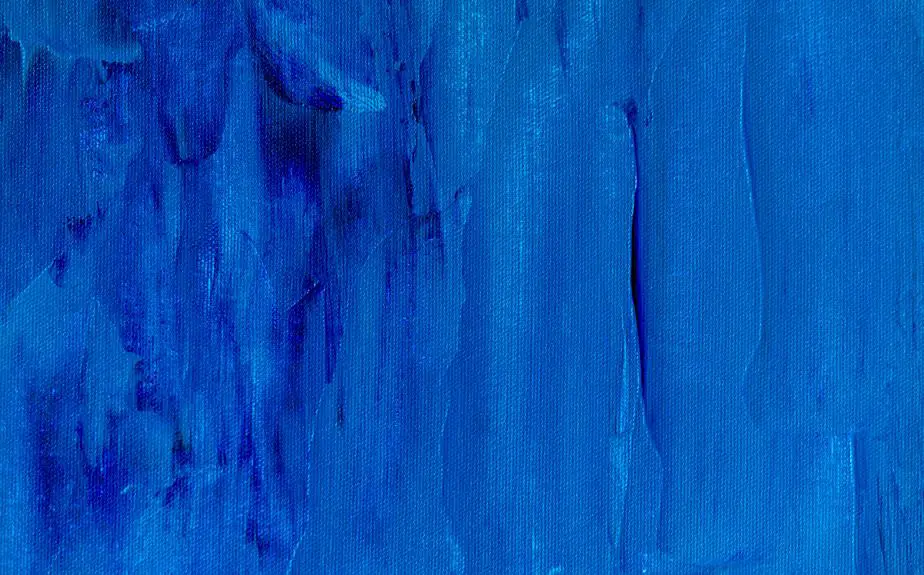When you're embarking on a textile project, understanding the various types of fabric paints can significantly influence your results. Each paint type—acrylic, dye-based, oil-based, spray, and specialty—comes with its own unique characteristics and applications. For instance, while acrylic paint offers vibrant colors and versatility, dye-based options can create a more natural finish. The choice you make can determine not only the process but also the final look of your work. So, what factors should you consider when selecting the right fabric paint for your next project?
Table of Contents
Key Takeaways
- Acrylic fabric paint is versatile, water-based, and requires heat-setting for permanent results, ideal for various textile projects.
- Dye-based fabric paint absorbs into fibers, offering rich colors suitable for techniques like tie-dyeing and detailed designs.
- Oil-based fabric paint provides vibrant, durable colors with water resistance, longer drying times, and requires proper care for longevity.
- Spray fabric paint offers even coverage for larger projects, is quick to apply, and should be used in well-ventilated areas.
Overview of Fabric Paints
Fabric paints come in various types, each designed to create vibrant, lasting designs on textiles. Understanding these types can help you choose the best one for your projects. You'll encounter a range of water-based and solvent-based options, each with unique properties and applications.
Water-based fabric paints are user-friendly, non-toxic, and easy to clean up. They're perfect for beginners, allowing you to mix colors and achieve a soft finish.
On the other hand, solvent-based paints offer intense colors and durability, making them suitable for outdoor items or high-wear fabrics.
You'll also find specialty fabric paints, such as puff paints, which create a raised texture, and glitter paints that add sparkle to your designs. These can elevate your projects and make them stand out.
Additionally, fabric markers are a convenient alternative for smaller details or designs, providing precision and control.
When selecting fabric paint, consider the fabric type, desired finish, and the project's purpose. This way, you can ensure your designs remain vibrant and intact, no matter how often they're washed or worn.
With the right choice, your creativity can shine through beautifully on any textile.
Acrylic Fabric Paint
Acrylic fabric paint stands out for its versatility and vibrant colors, making it a popular choice for a wide range of textile projects. Whether you're decorating T-shirts, bags, or home decor items, acrylic fabric paint delivers excellent results. It's water-based, which means it's easy to clean up with soap and water while wet, yet it dries to a durable finish.
One of the key benefits of using acrylic fabric paint is its ability to adhere well to various fabrics, including cotton, canvas, and blends. You'll find that it provides excellent coverage and can be mixed with mediums to alter its texture or finish. This adaptability allows you to achieve a matte, glossy, or even metallic look, depending on your project's needs.
When applying acrylic fabric paint, you can use brushes, sponges, or even stencils for precision. Once the paint dries, it becomes permanent, withstanding washing and wear. Just remember to heat-set your designs for the best longevity.
With so many colors and effects to choose from, acrylic fabric paint opens up a world of creative possibilities for your textile art!
Dye-Based Fabric Paint
If you're looking for a different approach to coloring textiles, dye-based fabric paint offers a vibrant and penetrating option that can transform your projects. Unlike acrylics, which sit on top of the fabric, dye-based paints absorb into the fibers, providing rich hues and a more natural feel. This deep penetration allows for a softer finish, making it ideal for clothing and other wearable items.
When using dye-based fabric paint, you'll want to prepare your fabric properly. Pre-washing helps remove any finishes that might interfere with dye absorption. Once your fabric's ready, you can apply the paint using various techniques, like spraying, brushing, or even immersion. The versatility of dye-based paints makes them suitable for everything from tie-dyeing to detailed designs.
Keep in mind that dye-based paints often require heat setting to ensure the colors stay vibrant after washing. This step is crucial to maintain the longevity of your artwork.
Oil-Based Fabric Paint
When you're considering oil-based fabric paint, it's important to understand its unique composition and properties.
You'll want to explore the best application techniques to achieve the results you desire.
Plus, knowing how durable and long-lasting this paint can be will help you make the right choice for your projects.
Composition and Properties
Oil-based fabric paint typically consists of pigments suspended in a binder, which helps ensure durability and flexibility on various textiles. The binder is crucial as it allows the paint to adhere well to fabric, providing a strong finish that withstands wear and washing.
You'll find that oil-based paints often produce vibrant colors, thanks to the high pigment concentration, making your designs stand out.
One of the notable properties of oil-based fabric paint is its water resistance. This means your projects can handle moisture without compromising the integrity of the design. However, keep in mind that these paints can take longer to dry compared to water-based options, requiring patience.
Another aspect to consider is the finish; oil-based paints tend to have a glossy appearance, which can enhance the visual appeal of your artwork. Additionally, they offer a certain level of flexibility, allowing the fabric to move without cracking or peeling.
When working with oil-based paints, it's essential to use them in a well-ventilated area due to the solvents involved, ensuring your safety while creating beautiful fabric art.
Application Techniques
Understanding the properties of oil-based fabric paint sets the stage for exploring effective application techniques that can enhance your creative projects.
When using oil-based fabric paint, preparation is key. Start by washing and drying your fabric to remove any finishes or dirt. Then, lay your fabric flat on a protected surface to prevent any mess.
For application, you can use a variety of tools like brushes, sponges, or even airbrushes, depending on the effect you desire. If you're aiming for fine details, a small brush will give you precision. For larger areas, a sponge or a foam brush can help you cover more ground efficiently. Remember to work in thin layers; oil-based paint tends to be thicker, so applying it gradually will prevent it from running or pooling.
After painting, allow your project to dry completely before handling it. This drying time can vary, so check the manufacturer's instructions. You may want to use a heat setting method after drying to ensure the paint adheres well to the fabric.
With these techniques, you'll achieve stunning results that showcase your creativity beautifully.
Durability and Longevity
The durability of oil-based fabric paint makes it an ideal choice for projects that require long-lasting color and resistance to wear. When you choose oil-based paint, you're opting for a finish that can withstand frequent washing and heavy use, making it perfect for items like clothing or upholstery. This paint type forms a tough, flexible layer that adheres well to fibers, ensuring that your designs stay vibrant over time.
You'll find that oil-based paints are less prone to fading compared to water-based alternatives, especially when exposed to sunlight. While they can take longer to dry, this extra time allows the paint to penetrate the fabric more effectively, enhancing its longevity.
However, it's essential to follow care instructions to maintain the paint's integrity. Washing in cold water and air drying can significantly prolong the life of your painted fabric. With proper care, your oil-based fabric creations can retain their beauty for years, making them a worthwhile investment for your artistic endeavors.
Spray Fabric Paint
Spray fabric paint offers a convenient way to apply vibrant colors to your textiles with even coverage and minimal mess. It's perfect for larger projects or when you want to cover intricate designs quickly. Using spray paint can save you time and effort, allowing you to focus on your creativity rather than meticulous brushwork.
However, there are a few things you should keep in mind when working with spray fabric paint:
- Ventilation: Always work in a well-ventilated area to avoid inhaling fumes. This will ensure a safe painting experience.
- Test First: Before applying the paint to your final piece, test it on a scrap fabric to see how it reacts and dries. This helps you avoid surprises later on.
With these tips in mind, you can confidently use spray fabric paint to transform your textiles into stunning works of art. Just remember to have fun and experiment with different techniques!
Specialty Fabric Paints
Exploring specialty fabric paints opens up a world of creative possibilities for adding unique textures and effects to your projects. These paints go beyond standard options, allowing you to achieve finishes that stand out. Whether you're looking for metallic shine, glittery sparkle, or even a puffy texture, specialty paints can elevate your fabric art.
Here's a quick overview of some popular specialty fabric paints:
| Paint Type | Effect | Best For |
|---|---|---|
| Metallic Paint | Shiny, reflective | Apparel, accessories |
| Glitter Paint | Sparkly finish | Decorations, costumes |
| Puff Paint | Raised texture | T-shirts, crafts |
| Fabric Markers | Fine detailing | Custom designs |
| Glow-in-the-Dark | Luminescent effect | Nightwear, kids' items |
When choosing specialty paints, consider how you want your final project to look and feel. Always test a small area first to ensure compatibility with your fabric. With the right specialty paint, you can truly make your fabric designs one-of-a-kind!
Frequently Asked Questions
Can Fabric Paint Be Used on All Types of Fabrics?
You can't use fabric paint on all fabric types. Some materials, like nylon or polyester, might not hold the paint well. Always check the paint label for compatibility and test on a small area first.
How Do I Remove Fabric Paint From My Clothes?
To remove fabric paint from your clothes, try soaking the stained area in warm water, then gently scrub with soap. If needed, use rubbing alcohol or a commercial remover, but test it on a hidden fabric area first.
Are Fabric Paints Non-Toxic and Safe for Children?
Yes, many fabric paints are non-toxic and safe for children. Always check the label to ensure it's labeled as non-toxic. It's a good idea to supervise them while they create their masterpieces.
How Long Does Fabric Paint Typically Last After Application?
Fabric paint typically lasts for several years after application, especially if you follow care instructions. It's best to wash items in cold water and avoid harsh detergents to maintain the paint's longevity.
Can I Mix Different Types of Fabric Paints Together?
You can mix different types of fabric paints, but be cautious. Some combinations may lead to unexpected results in texture or color. Always test a small area first to see how they interact.
- Tetron Fabric for Marine Applications: Durability and Use Cases - June 18, 2025
- Tetron Fabric for Outdoor Furniture: Weather Resistance and Care - June 18, 2025
- Tetron Fabric for Wall Coverings: Style and Application Tips - June 18, 2025




